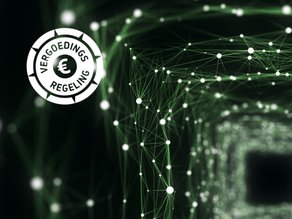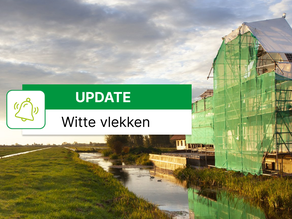MAGOXX board has passed the start-up phase
Start-ups can generally use a helping hand. That’s why start-ups have been given a separate place in the Witte Vlekken Project. Milieudatabase.nl talked to Jan Engels, founder and director of MAGOXX board. His magnesium oxide board has now been included in the NMD and, as manufacturer, Jan Engels’ company has passed the startup phase. He knows how difficult it is to launch a construction product on the market. To help other startups, he talks about how he survived the startup phase and his vision for the future.
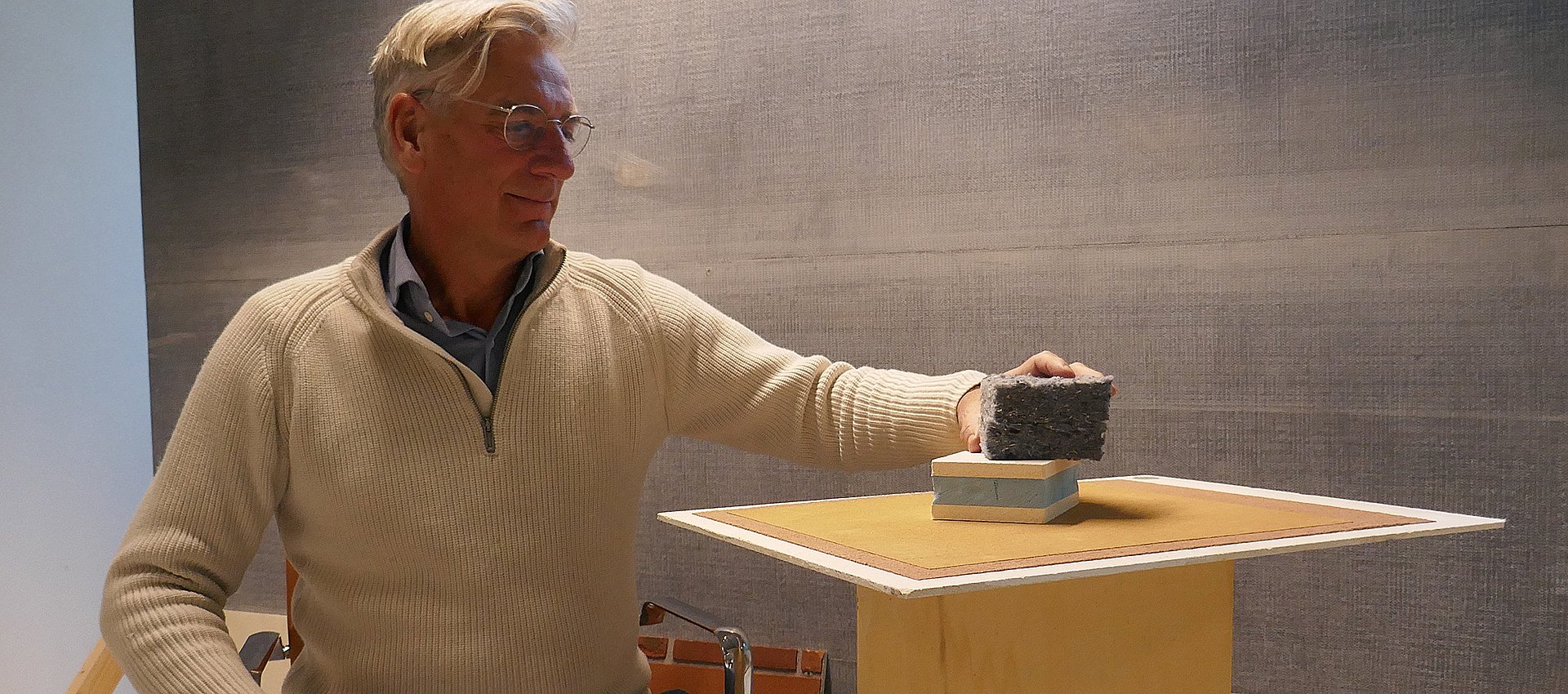
The MAGOXX board adventure started ten years ago after Jan Engels’ employment with courier service DHL Express was terminated. He received a golden handshake and decided to use that money to do something useful. It had to have something to with building (he had at one time graduated as architect at TU Delft) and he wanted to do something that expressed his social commitment. When searching on the internet for materials to build his summerhouse, he came across magnesium oxide boards. ‘This board was hardly known in the Netherlands but was used a lot in Asia. It’s a board with special qualities. After I used this board in my summerhouse, in 2013 I came up with the plan of producing this board in India.’
Mister Keepi foundation
It’s no coincidence that Jan Engels chose India to develop the first MAGOXX-board production line. He established the ‘Mister Keepi Foundation’ in 2012. This foundation raises funds to equip schools in India with solar panels. These solar panels enable pupils to charge mobile LED lamps so they have light at home and can study in the evenings. ‘During my visits to rural India for the foundation, I saw a significant proportion of farmers’ crops being lost to heat. Fruit and vegetables were left to rot in the hot sun. I then came up with the idea of making cold rooms with walls made from magnesium oxide boards. I’d already used these boards in my summerhouse as protection from the cold, but in India they could be used to protect the harvest from the heat. That would help farmers increase their harvest.’
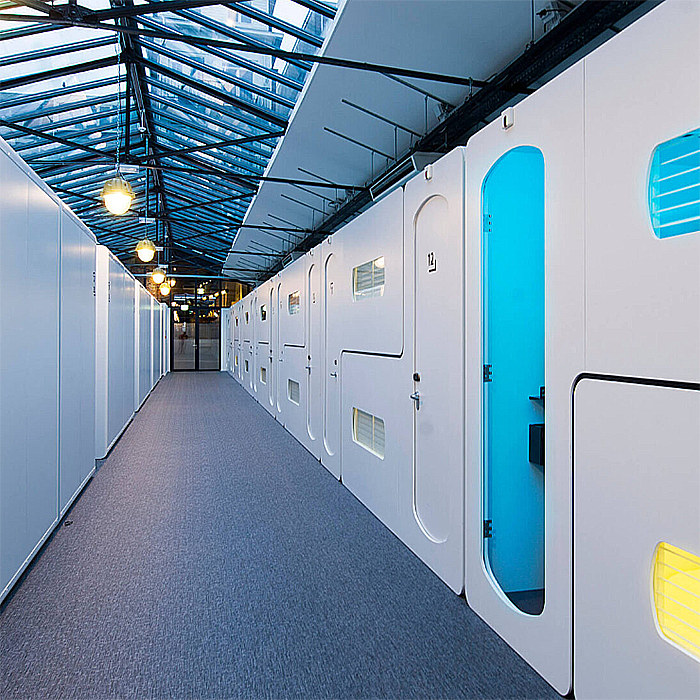
MAGOXX® Board is a multi-functional construction material based on magnesium oxide, reinforced with multiple layers of fibreglass mesh. MAGOXX® Board is highly durable, non-combustible (fire class A1), lightweight, soundproof, weatherproof and impact resistant. This saves time and money. MAGOXX® board is available in various dimensions and thicknesses. The sheets can be used for an incredible range of interior and exterior applications. Examples include: roof structures, roofing, wall cladding, channel covers, steel protection, system walls, prefabricated constructions and interior design.
First production line
In 2014, Jan Engels started a production line of sandwich panels using the magnesium oxide board under the name SINH Board. ‘It was successful initially. But that changed when my neighbour started doing the same thing. He had the advantage that he could offer the board at a lower price as he hardly needed to pay any tax. It was an uneven fight and two years later I had to stop production in India.’
Jan Engels then found a production partner in China and decided to focus on the European market, starting in the Netherlands. The restart offered him the opportunity to reorient himself with the product. ‘I decided to stop producing specifically sandwich panels and focus on the production of board. You can still make sandwich panels from boards, but there is also a wealth of other applications.
The magnesium oxide boards can, for example, be used as facade board, as interior walls, as cladding for steel structures or as prefab building sections. The aim is to have a factory in the Netherlands or Germany within three to five years, and expand sales to Belgium, Germany and Scandinavia. We’re not quite there yet, but it looks as though we’ll have our own production line in a few years’ time either here or in Germany and will be able to sell around 500,000 m² of board per year.’
Jan Engels’ company has now been in operation for ten years, its workforce has increased to five, and its turnover is growing by some 30% annually. But things certainly didn’t all go smoothly. Banks were not prepared to invest and the market didn’t embrace him with open arms. The development often followed the pattern of two steps forward and a big step back.

‘I particularly wanted to launch a product on the market that offered top quality. The quality simply had to be just right. That sounds easier than it is. There are so many requirements that you need to meet, which are often very different in nature and sometimes counteract each other. In the end, you need to ensure that all the required tests are conducted and that you receive the certification. The test results often led to product adaptations. It took some three years before the product was technically sound.’
‘If I’m honest, I mainly approached the market led by my own opinions. I thought: this is a top quality product and it’s just what the market needs. I’ll sell this myself. But the building sector isn’t innovative in itself. The most important lesson from the startup phase is that you need to determine carefully who your customer is and what the market wants. You need to do extensive market research for this. Maybe we would then have moved through the start-up phase quicker. You can't allow yourself to say: this is the product, just buy it. It doesn’t work like that. You need to be flexible and to listen to the customer’s preferences.’
Jan Engels doesn’t regret his approach of not marketing MAGOXX Board via the building trade. He decided to inform the construction industry about the board via the digital route (mainly via his website and social media). Bypassing the building trade also enabled him able to offer the board at a competitive price and come into direct contact with customers. He then heard what customers thought of the product and learned how customers wanted to use the board. That’s how he found out that the industry wanted to use the board as fire-proof cladding for installations and that prefab construction was an important growth market. ‘We discovered that our website was well visited by prefab facade builders. We then actively approached this target group. They are now our biggest purchasers.’
What Jan Engels also has no regrets about is the premise that the product must be sustainable. The LCA survey quickly followed the CE certification. Jan Engels: ‘That the product is sustainable was a “must” for me. It should improve the world. The magnesium oxide board has a low carbon footprint and is non-toxic. A temperature half that of cement and concrete is sufficient for magnesium oxide production. Gypsum currently dominates the market for fire-retardant products, but an alternative will need to be found for this as well. Gypsum supplies are running out, while magnesium-oxide crystal is available in abundance and, compared with gypsum board, much less material is needed to make a board of equal strength. Magnesium oxide boards are also 100% recyclable. But we still need to convince the construction industry of the product’s sustainability. We hope that we’ll manage this in the coming years now that the start-up phase has passed.’
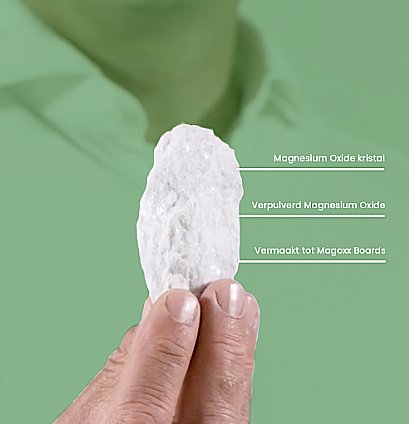
This page has been translated using DeepL


